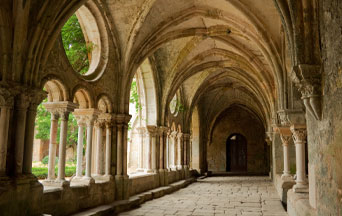
Liberal Catholics had been trying to organize since the late 1830s and the struggle against the state University system(described in parts 1-6 of this series). Bishop Felix Dupanloup of Orléans was the primary architect. In previous installments, we have described how stubbornly he applied himself to attaining this objective.
By publishing books and letters, he tried to undermine the Catholic Party. He stopped at nothing to win the influential and aristocratic Count of Montalembert to his cause. Above all, He waged violent campaigns against l’Univers and its Editor-in-Chief, Louis Veuillot, the main obstacle to achieving those goals.
However, Bishop Dupanloup’s efforts were unsuccessful. Veuillot had achieved an excellent position for his newspaper. He had transformed it from an obscure periodical into a superb paper read and respected throughout France. L’Univers was enthusiastically supported by most Catholics and hated by the Church’s enemies. At the same time, Montalembert worked relentlessly for the bishop of Orléans, but he hesitated to renounce his own glorious past. He balked at a definitive fight against the ultramontanism he had hitherto defended. Montalembert’s reticence left Bishop Dupanloup without a lay leader for the movement he sought to organize.
Napoleon III’s 1852 coup d’état established the Second Empire. It also facilitated the formation of the liberal Catholic Party. Montalembert, who initially supported the new Emperor, soon allied himself with liberal politicians in opposition to him. The social prestige of Montalembert’s new friends, his natural tendency to adopt liberal doctrines, and, above all, Bishop Dupanloup’s persuasive action eventually overcame the former ultramontane leader’s last resistance. The Count’s 1852 book, published under the title Des intérêts catholiques au dix-neuvième siècle (Catholic Interests of the Nineteenth Century), marked a complete break with his past. It placed him definitively among liberal Catholics.
Eternal and Natural Law: The Foundation of Morals and Law
A man of action, Montalembert quickly saw he needed a newspaper to unite his new followers and oppose l’Univers. Previous attempts in this direction, including Frederick Ozanam’s Ère nouvelle and the Archbishop Sibour of Paris’s Moniteur catholique, had failed. Producing a newspaper to fight Veuillot was no easy task. However, liberal politicians took an interest in Montalembert’s enterprise as a way to antagonize Napoleon III. Big names threw their collaboration and support behind the Count’s new magazine.
Instead of founding a new publication, Montalembert decided to revive Le Correspondant, which had long vegetated for lack of readers. Le Correspondant had been founded in 1829 by the Viscount de Carné, Father de Cazalès, and Augustin de Meaux. It drew its motto from the words of one-time British Prime Minister George Canning: “Civil and religious liberty for the whole universe.” Superseded by l’Avenir and hit by the condemnation from Father Félicité de Lamennais, Le Correspondant had never been successful. Only with great sacrifices did its director, Charles Lenormant, keep it from disappearing. Lenormant, who had resigned from a professorship at the Sorbonne over the freedom of teaching issue, accepted Montalembert’s plans with great reluctance.
An editorial committee chaired by Montalembert was set up to run the journal. Its members included Lenormant, Prince Albert de Broglie, an Orleanist and Gallican, and the Count de Falloux, a legitimist chief and very liberal Catholic. It also included two long-time associates of the Count, Theophile Foisset, an ultramontane who followed Montalembert without much conviction, and Augustin Cochin.
The editorial committee met at Montalembert’s château of La Roche-en-Brény. Bishop Dupanloup attended as well. The subject at hand was an article presenting the journal’s new purpose. The piece became the manifesto for Liberal Catholics. The task of writing it fell to Prince de Broglie.
The article’s lengthy introduction about methods of apostolate indirectly accused Veuillot of many tactical errors. The article expounded the principles for which the liberals would fight. For starters, they asserted that there was no antagonism between reason and faith. As modern society had been born from human reason, they did not oppose it. However, they posited that the Church should not combat society but, rather, be the authority that regulates it. They argued that society’s constitutive principles, especially civil equality, were fully compatible with the spirit of religion. They laboriously explained their theory that the Church does not identify with any political form. The article ended by declaring that if it became indispensable to force the Church to abandon its noble impartiality, the liberals would undoubtedly prefer liberty.
 Learn All About the Prophecies of Our Lady of Good Success About Our Times
Learn All About the Prophecies of Our Lady of Good Success About Our Times
This meeting at La Roche-en-Brény marks the foundation of the liberal Catholic Party. Veuillot fought against it until the end of his life in 1883.
By definitively ending attempts by ecclesiastical authorities to close l’Univers, Pope Pius IX’s encyclical Inter multiplices gave Veuillot the independence he needed. With the Pope’s support, he had the standing to force Liberal Catholics to stay within the limits of Le Correspondant. In so doing, he was able to prevent liberal errors from contaminating all French Catholics.
Photo Credit: © Atypique – stock.adobe.com

